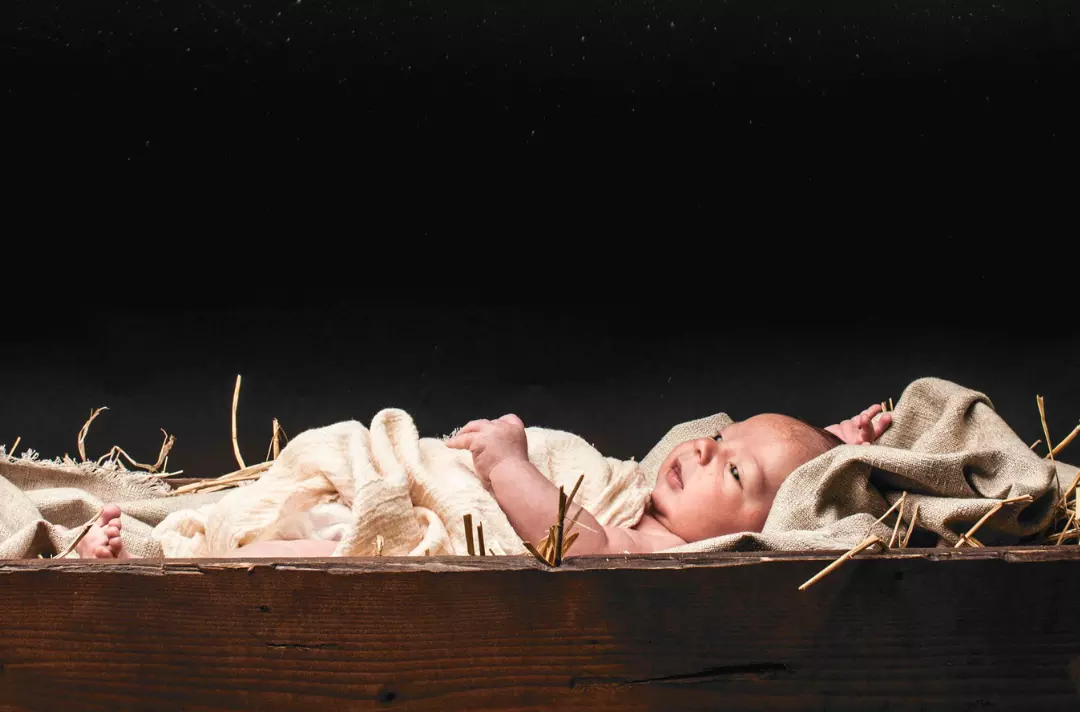9 December 2023
Advent 2023: Born to save his people
Major Chris Baldwin
Major Chris Baldwin discovers how Jesus fits into God’s plan.
Key text
As a family we love to do jigsaws together on holiday. Every now and then, one of us will add a few pieces. Along the way, however, things can get confusing. There is the piece that should fit but refuses to. There is the missing piece that no one can find. Once the puzzle is complete, seeing the big picture makes sense of it all. Life can be like that too.
Pause and reflect
- Have you ever struggled to make sense of life?
- Are there things that do not seem to fit, or holes with something missing?
When Matthew wrote his Gospel, people had been struggling to understand why the world was the way it was. There were holes in the picture where nothing seemed to fit. God had promised Abraham that his descendants would be ‘a great nation’ and that ‘all peoples on Earth would be blessed’ through him (Genesis 12:2 and 3) and yet they had consistently failed to live up to that promise.
For Matthew, the coming of Jesus changed everything: he completed the picture. Matthew begins by plotting out the genealogy from Abraham to Jesus, through 3 groups of 14 generations.
Matthew highlights times when God intervened to rescue his people from their failures. For example, the terrible mess during the time of the Judges: ‘In those days Israel had no king; everyone did as they saw fit’ (Judges 21:25). Israel wants a king to lead them like other nations. God grants their request and Saul is appointed king.
David is chosen to follow Saul. During his reign, God renews his covenant with his people and promises that one of David’s descendants will reign on his throne for ever (see 2 Samuel 7:8–16).
Many years later, God saves his people again. He sends them into exile (see 2 Chronicles 36:15–17 and Jeremiah 29:10–14) and, through his prophets, calls them back to their covenant with him. He promises he will fulfil all his promises.
Matthew suggests that a further 14 generations pass, then God sends Jesus to save his people. Three periods of fourteen generations is the same as saying six lots of seven. To Matthew’s Jewish audience this would have suggested that the completion, the seventh period, had now arrived – the coming of Jesus was the dramatic fulfilment of the ages.
Matthew continues the story of Jesus’ birth from Joseph’s point of view. The circumstances are again messy and heartbreaking. Joseph’s life seems to fall apart when Mary, who is pledged to be married to him, is found to be pregnant. Joseph is a good man and is ‘faithful to the law, and yet did not want to expose her to public disgrace’ (v19).
Pause and reflect
- What are Joseph’s options and how does he respond?
- Have you ever faced a dilemma with two equally unappealing options?
Once again, God intervenes. In a dream, he tells Joseph that Mary’s pregnancy is ‘from the Holy Spirit’ (v20) and that he should marry Mary and name the child Jesus, which means Yahweh is salvation – through this child, God is going to bring about the salvation of his people (see v21).
To emphasise his point, Matthew uses an important phrase: ‘All this took place to fulfil what the Lord had said through the prophet’ (v22). He quotes Isaiah 7:14: ‘The virgin will conceive and give birth to a son, and will call him Immanuel.’
The prophecy in context does not seem to predict a virgin birth. Matthew, however, uses the word ‘fulfil’ throughout his Gospel to mean that we should look deeper than the surface meaning of the words.
Isaiah’s prophecy is part of a wider message. In chapters 7 to 12, Isaiah refers to three different children – probably his own – who are signs and witnesses of God’s plans. Each of them has a prophetic name: Shear-Jashub, meaning ‘a remnant shall return’ (see Isaiah 7:3), Immanuel, meaning ‘God with us’ (see Isaiah 8:8) and Maher-Shalal-Hash-Baz, meaning ‘plunder and carry away’ (see Isaiah 8:1).
Isaiah’s prophecy comes to a climax when God promises the coming of another child who will rule in God’s name for ever. He will be called ‘Wonderful Counsellor, Mighty God, Everlasting Father, Prince of Peace’ (Isaiah 9:6).
Through Isaiah, God declares that he is going to hand his people over into exile as the spoils of war, but that he is with them. They will return, and when they do a new child will come and sit on David’s throne for ever. This is what Matthew is referring to when he says that Isaiah’s prophecy is fulfilled.
Pause and reflect
- Why is it so important to look beyond the letter of the law to the meaning and purpose behind it?
- Can you find other prophecies in Matthew’s Gospel where this same principle is applied?
Matthew tells us that Mary was pregnant despite Joseph having ‘no union with her’ (v25 Berean Study Bible). Joseph obeyed God and claimed responsibility for this child. He probably bore some blame and shame, but he did so with honour.
Perhaps during Advent, behind all the feel-good promises of peace and goodwill, the hard reality of bringing salvation to a harsh and messy world might require of us a similar willingness to get our hands dirty. If we do, remember this – God is with us!
Bible study by

Major Chris Baldwin
Corps Officer, Leipzig, Germany
Discover more

Devotions, podcasts, articles and resources to help you journey through Advent and celebrate Christmas.

In a series of Advent reflections, Niamh considers how we can share the comfort of God with others.

A podcast of reflections for Advent inspired by Christmas carols.

